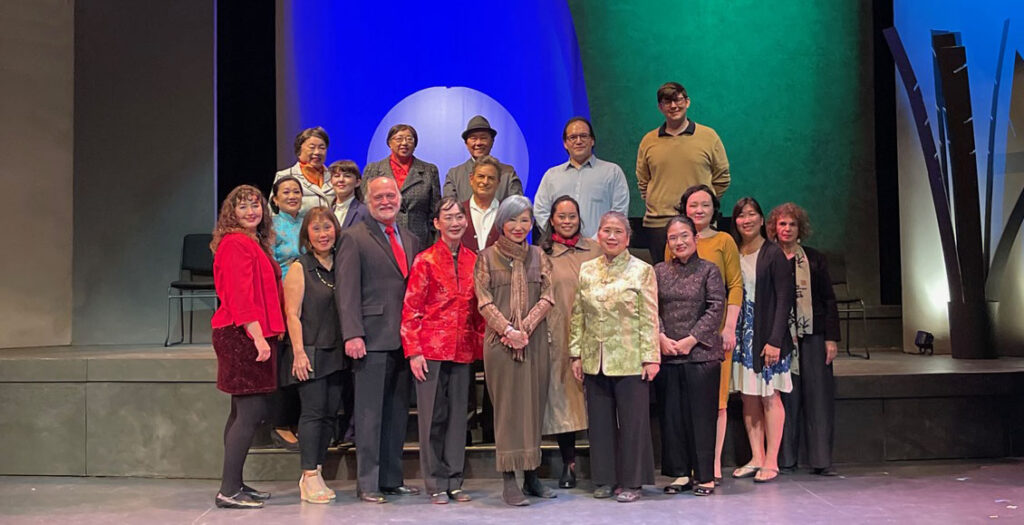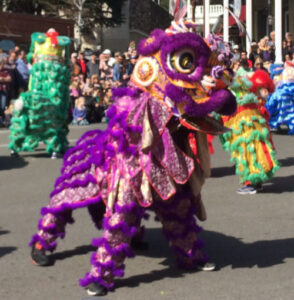- Volunteers Needed - March 25, 2024
- Nevada City Chinese Lunar New Year Festival and Parade - August 31, 2023
- Nevada County’s Connection to Chinatown Rising - June 5, 2023
For me, growing up in San Francisco’s Chinatown, it was family, food, excitement, and remembrance. Thanksgiving, Christmas, and Chinese New Year had the same heightened celebration for me as a child.
While my parents were immigrants to America from southern China – they came for a better life like most immigrants. The upbringing of their “baby boomer” children was strict (there were five of us kids!). It was tough growing up balancing the traditional values and old schools of thought with the “new” and more “progressive” ways of thinking.

Western holidays, like Thanksgiving and Christmas, were “new,” which we quickly adopted. Although we were not Christians, Christmas was celebrated as a cultural holiday, and my dad, a World War II veteran, like clockwork, started sending out holiday cards as soon as December rolled around. My parents exchanged gifts with relatives and friends.
Thanksgiving was a time to rekindle friendships and getting together with extended families for a feast of both American food (turkey, ham, and all the fixings) and Chinese food (soup, rice, and stir fries). Holiday dinners were always a combination of the two. After Christmas, we looked forward to the Chinese Lunar New Year. Our family would spend weeks in preparation, engaging in symbolic rituals, such as thoroughly cleaning house, shopping for new clothes and special foods, paying off debts, getting a haircut, and setting off firecrackers at the front door of the house to scare away “evil” spirits.
These rituals represent “getting rid of the old” and paving the way for “the new.” One thing that I loved is that on Chinese New Year, our parents did not reprimand the children. Only words of praise were spoken, as any negativity is a sign of bad omen, or bad feng shui. Chinese parents are known to be critical of their children (tough love!), so on this holiday, it must have been “difficult” for them to “hold their tongue.” The two-week Chinese New Year celebration culminated in an evening parade in San Francisco’s historic Chinatown through the famed Grant Avenue, with all its pageantry. The grand finale of the lighted “mile-long Golden Dragon”, was a sight to behold and marveled by the young and old.
Chinese New Year brought together families and friends to “welcome” the year with elaborate meals, pastries, dried fruits, candies, oranges, and tangerines. Much of the food and sweets were symbolic of good luck and prosperity. Children and teenagers always look forward to receiving red envelopes with “lucky” money from their parents, relatives and other adults. The denomination could be any amount, usually more is given to one’s own children and grandchildren. In today’s economy, $1 in a red envelope is typical, but it could be $2, $5, $10, or more, depending on the relationship between the giver and the child. Red envelopes are also used to enclose money gifts for weddings, birthdays, graduations, and expressions of gratitude. The color red is considered a color for good luck.
One heart-warming ritual that my parents engaged in during the lunar new year is the remembrance of our ancestors. We practiced Ancestral Worship. We had an altar in the house with photos of our departed grandparents and any immediate family members. We honored their spirits with offerings of incense, rice, wine, chicken, roast pork, and pastries.
I am certain that the early Chinese pioneers to the Sierra Foothills in the 1800s practiced many of these rituals, as much as practicable, under hardships and trying circumstances. They were our ancestors from southern China, who paved the way for a better life in America. They mined for gold during the Gold Rush, helped develop California’s agricultural industry, and were the main labor force in building the western portion of the Transcontinental Railroad, among many other achievements.

The Community Asian Theatre of the Sierra (CATS) honors these early Chinese pioneers with an annual parade and festival in Nevada City on Commercial Street (the site of the old Chinese Quarter) and at the Miners Foundry Cultural Center for a festival afterwards. Our last such event was in early 2020, just before the pandemic hit. Due to lock-downs and safety measures enacted in the years that followed, and the uncertainty of when “large crowds may safely gather again,” CATS was not able to plan its annual parade and festival for 2023, the Year of the Rabbit. However, we are currently planning the 2024 event, the Year of the Dragon, with support from the Nevada City Chamber of Commerce, the City of Nevada City, as well as with the Nevada County Arts Council.
This family-friendly event typically draws 1,000 people to town, and adults and children alike have enjoyed the following: honoring distinguished community members as grand marshals, Chinese lion and dragon dancing, martial arts, taiko drumming, school children in exquisite costumes, Hawaiian hula, historic films, poetry, tea-tasting, Asian-style food and specialty drinks, arts and crafts, Asian-inspired tattoos, yummy desserts, and more!
CATS will continue to promote cultural diversity in a community that once was greatly inhabited by Chinese pioneers. CATS is always seeking sponsors and volunteers. Please contact me by email, here, if you are interested.
I, personally, will be gathering with my extended family in the Bay Area for our traditional feast to “welcome the Year of the Rabbit.” While the Year of the Rabbit begins on January 22 and ends on February 9, many families celebrate even after February 9, or whenever they are able to. The point is to start anew – together. My family and I have not gathered for Chinese New Year since 2020, when the pandemic hit. It will be such joy to see everyone!
While many Chinese and Asians in America celebrate this holiday as the Chinese New Year or the “Lunar New Year,” the People’s Republic of China, since the early 1900s, refers to it as the “Spring Festival.” Here is an interesting explanation, referring to the winter solstice and the solar system.
We at Community Asian Theatre of the Sierra wish you and yours a very happy, healthy, and prosperous Year of the Rabbit. Check our website for updates on Chinese New Year for 2024. In our immediate future, we are presenting our spring show, The Great Leap, by Lauren Yee, and directed by Scott Gilbert, at the Nevada Theatre, from April 27th to May 20th. The Great Leap is a story about life through the lens of a basketball game between an American college team and a team from Beijing University. Other cultural enrichment events planned thus far include (1) a documentary at the Nevada Theatre with Onyx Downtown, Chinatown Rising, on June 11th with Q&A with the filmmakers afterwards; and (2) a slideshow presentation on Nepal and Bhutan by world traveler, Charlotte Xu Dewar. Date to be advised. Email us if you wish to be notified when it is scheduled.
Happy Lunar New Year!

0 comments on “What does the Chinese Lunar New Year have in Common with Thanksgiving and Christmas?”